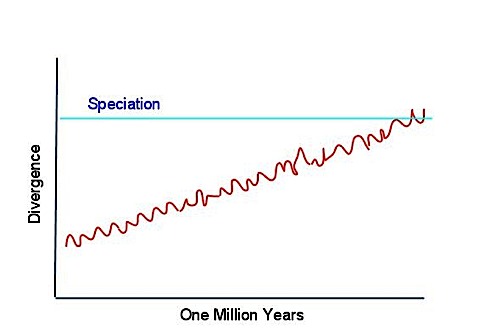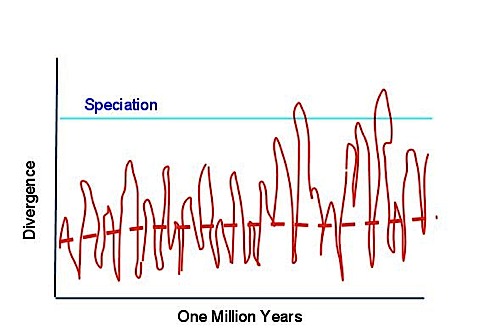Rapidly Oscillating Evolution
Evolution of life on earth was long thought to be slow and imperceptible. Recent observations have revealed evolution to work much faster than anyone thought. If you are careful and patient, you can witness the evidence of natural selection within your lifetime. Several decades-long studies in the field have demonstrated measurable natural adaption, and possibly speciation over this brief time period.
These studies include the disappearance of armor plates on stickleback fish in Alaskan and Norwegian fresh waters, the near-speciation of finches on Daphne Major Island in the Galapagos (one of the long-running studies of natural selection by the Peter Grant, a story told in a prize-wining book, The Beak of the Finch), the speciation of the hawthorne fly — and its parasites (!) — and the de-speciation (becoming one species again) in the cichlid fishes in Africa. In all these cases and more, generations of animals will show greater divergence and more rapid inheritable adaptation to changing conditions than was thought possible.
Evolution happens so fast — in much less than a hundred generations — that the question becomes, why don’t we see such rapid evolution in the fossil record? We know from the geological record that species remain stable for very long periods and then occasionally (and relatively quickly) change, and then remain stable again. (A process called punctuated equilibrium.) A recent article in New Scientist rounding up the current crop of scientific papers about rapid evolution on earth, put the answer this way:
People think evolutionary changes are imperceptible in the short term but add up to big changes over millions of years. In fact, the opposite is true. It now appears that organisms evolve very rapidly in response to any changes in their environment, but in the longer term most evolutionary changes cancel each other out.
I made a cartoon graph to try to illustrate this concept. The first one is the orthodox schoolbook view of evolution: tiny changes on the way to large scale change and eventually two new species.

Orthodox View ^
The next one is the new view. Rather than endure minute adaptation, it turns out natural selection endures rapid great adaptation — but the adaption is so fast and adaptive that it can undo itself just as fast, or evolve in another entirely direction a few decades later. Sometimes the fast evolution will cause speciation or near-speciation, but then reverse itself, and re-form what was separated. The picture is one of rapid oscillation, as a very adaptive system is constantly shape-shifting, but with little stability. However despite this quick change the “average” net adaptation is very tiny, which explains why the fossil record show slow or no change over long periods of time. The rapid contemporary evolution does not get locked in.

New View of Rapid Evolution ^
But occasionally during one of the larger swings in adaption, say one of the many speciation events, something happens to lock in that particular change. Maybe there is a major geological or climatic change which causes two populations to separate, and re-enforce their divergence. This suddenly shifts the new “average” and now we see in the fossil record the ordinary long-term stasis in a species and a sudden change into a new species — or punctuated equilibrium. The amount of adaption and divergence has not changed. That’s what the next cartoon shows:

How Species Are Born ^
The story of life’s evolution then is that natural selection is very vigorous and rapid, but very noisy. Organisms can evolve to adapt to changing conditions very quickly. So quickly that much of this adaption, including new speciation, does’t have time to stick. Normally, species don’t change much. But every now and then, this rapid evolution will lock in, and a new species will remain different, and this new condition will suddenly shift the line of stability to a different vector. Even the normal noisy undoing of species won’t take hold now, so the new species persists for a change. A new species is born despite its tendency to unravel and adapt out of its new specieshood.
Adaptation is quick and rife, but stability is the norm because evolution tends to weed out the noise of change.


